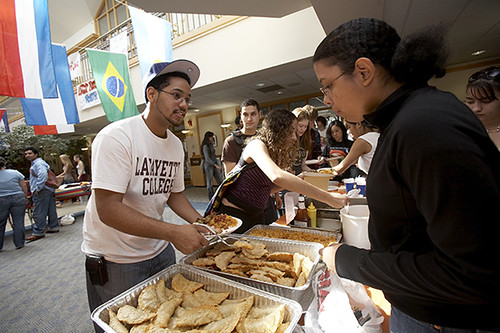 |
| Photo Credit: Lafayette College |
It may be helpful to share how I view these categories in the simplest way I know how. According to my understanding, I view them in the following manner:
Race - deals with shared physical characteristicsFor a growing number of Latino Americans, their ethnic identity is defined much more by shared cultural values rather than common racial characteristics.
Culture - deals with shared values and behavior
Ethnicity - deals with shared culture and, oftentimes, shared race (although this is not always the case)
The New York Times reports:
"This argument over identity has gained momentum with the growth of the Latino population, which in 2010 stood at more than 50 million. Census Bureau officials have acknowledged that the questionnaire has a problem, and say they are wrestling with how to get more Latinos to pick a race. In 2010, they tested different wording in questions and last year they held focus groups, with a report on the research scheduled to be released by this summer.
Some experts say officials are right to go back to the drawing table. “Whenever you have people who can’t find themselves in the question, it’s a bad question,” said Mary C. Waters, a sociology professor at Harvard who specializes in the challenges of measuring race and ethnicity.
The problem is more than academic — the census data on race serves many purposes, including determining the makeup of voting districts, and monitoring discriminatory practices in hiring and racial disparities in education and health. When respondents do not choose a race, the Census Bureau assigns them one, based on factors like the racial makeup of their neighborhood, inevitably leading to a less accurate count.
Latinos, who make up close to 20 percent of the American population, generally hold a fundamentally different view of race. Many Latinos say they are too racially mixed to settle on one of the government-sanctioned standard races — white, black, American Indian, Alaska native, native Hawaiian, and a collection of Asian and Pacific Island backgrounds.
Some regard white or black as separate demographic groups from Latino. Still others say Latinos are already the equivalent of another race in this country, defined by a shared set of challenges.
“The issues within the Latino community — language, immigration status — do not take into account race,” said Peter L. Cedeño, 43, a lawyer and native New Yorker born to Dominican immigrants. “We share the same hurdles.”
At a time when many multiracial Americans are proudly asserting their mixed-race identity, many Latinos, an overwhelmingly blended population with Indian, European, African and other roots, are sidestepping or ignoring questions of race."In a country like the United States where the race and ethnicity of people has often been a determining factor in the type of life they would enjoy, I'm grateful that an increasing number of individuals are refusing to be placed in the boxes that those who have gone before us have put them in.
To read the complete New York Times article entitled please click here.
(You may also want to check out a previous post of mine which addresses this topic, "Why Latino is Not a Race.")
No comments:
Post a Comment